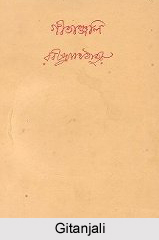 British "imperialism" did become successful to create a colossal impact on India. India, having previously served as a group of independent and semi-independent princedoms and territories, had undergone tremendous change under and during British administration. And it was precisely during this extensive phase of British Raj that Indian literature was forever badged with the notion of `colonialism` or `imperialism`, never being entirely successful to have broken out from the cocoon of acting the ruled under the ruler. Indian literature did not actually remain `Indianised` literature any more under the British influence, which mirrored a thorough assemblage of English language as well as regional Indian literature. Originally acting with the purpose to consolidate their hold on India by establishing a population that mouthed the same language as their rulers, the British decision in the 1830s to educate Indians in a Western fashion, with English as the principal language of instruction, was just the beginning of a chain of events, incorporating a rise in Indian nationalism, and indeed a growth of a rather colonized concept in Indian literature.
British "imperialism" did become successful to create a colossal impact on India. India, having previously served as a group of independent and semi-independent princedoms and territories, had undergone tremendous change under and during British administration. And it was precisely during this extensive phase of British Raj that Indian literature was forever badged with the notion of `colonialism` or `imperialism`, never being entirely successful to have broken out from the cocoon of acting the ruled under the ruler. Indian literature did not actually remain `Indianised` literature any more under the British influence, which mirrored a thorough assemblage of English language as well as regional Indian literature. Originally acting with the purpose to consolidate their hold on India by establishing a population that mouthed the same language as their rulers, the British decision in the 1830s to educate Indians in a Western fashion, with English as the principal language of instruction, was just the beginning of a chain of events, incorporating a rise in Indian nationalism, and indeed a growth of a rather colonized concept in Indian literature.
Prior to English colonisation, India was a fragmented nation and was essentially multilingual, with 15 major languages and approximately 720 dialects. English language had served as a common ground for Indians and had granted separate cultural and ethnic groups to come nearer to each other. Although it was primarily the educated Indians from the fortunate caste who verbalised and mouthed in English, these were in fact the most influential people in terms of acting as `facilitators` for nationalistic ideas to be propagated throughout the populace. The issuing of magazines and journals in English was also a great influence on the rise of Indian nationalism, as also a tremendous upgradation of British influence on the then contemporary Indian literature. The spread of English language as the most redefining expression of the mass natives, was a key guiding factor and impetus to have had exercised a tremendous British influence on contemporary Indian literature, both in regional as well as in English. English language and with it, the spread of pennings in Indian English literature had become the first ever forceful potential phase, from whence was begun the genre of British influence on contemporary Indian literature.
English language thus had made its passage into India with the British Empire`s educational policy for the native `colonised` Indians and soon found a secured home here. With the English connection, European culture/literature scouted its way into India too and the Indian literary geniuses had responded immediately and effectively. Consequently, for instance, one can discover a serialised Urdu novel Fasana-e-Azad, influenced by the Spanish novel Don Quixote de la Mancha, an English novel The Pickwick Papers and the great epic romances (dastan) of Persian and Urdu, being published within the years 1878 and 1885, was penned by Ratan Nath Sarshar.
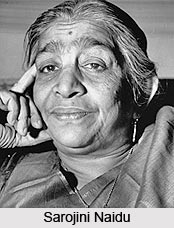 Not only Indian English, the ethos of helplessness, hopelessness, rebellious and existential against without and with a cause, despair and being desperate amidst social and economic turmoil - all such elements were over and over mirrored in regional Indian literature; it is always comprehended that however the Britishers have had been benevolent to have spread the cause of English language to mass Indian homes, the fact of unlawful and unreasonable cruelty can never be denied, which is mostly still governed perhaps in subtle language in contemporary Indian literature as opposed to the conspicuousness in the pre-Independence contemporaneity. As such, British influence on contemporary Indian literature does portray both the dark and un-dark sides of the same coin. In such a context of British influence on Indian contemporary literature, the introduction of the printing press in India can never be denied. It was thus the ushering in of the printing press which had made possible the establishment and issuing of newspapers and journals in English and Indian languages in an overwhelming manner. This media had created new opportunities for Indians to write, publish and communicate across their enormous country. A major development in pre-Independence during this period was the Bengal Renaissance - an intellectual and cultural understanding and movement amongst the Bengalis in Calcutta, Bengal (presently Kolkata), which was both the British capital and the nucleus of Bengali culture. The writers of Bengal Renaissance were primary and principal and decisive to have led the way in synthesising Indian and Western ideas in literature and culture.
Not only Indian English, the ethos of helplessness, hopelessness, rebellious and existential against without and with a cause, despair and being desperate amidst social and economic turmoil - all such elements were over and over mirrored in regional Indian literature; it is always comprehended that however the Britishers have had been benevolent to have spread the cause of English language to mass Indian homes, the fact of unlawful and unreasonable cruelty can never be denied, which is mostly still governed perhaps in subtle language in contemporary Indian literature as opposed to the conspicuousness in the pre-Independence contemporaneity. As such, British influence on contemporary Indian literature does portray both the dark and un-dark sides of the same coin. In such a context of British influence on Indian contemporary literature, the introduction of the printing press in India can never be denied. It was thus the ushering in of the printing press which had made possible the establishment and issuing of newspapers and journals in English and Indian languages in an overwhelming manner. This media had created new opportunities for Indians to write, publish and communicate across their enormous country. A major development in pre-Independence during this period was the Bengal Renaissance - an intellectual and cultural understanding and movement amongst the Bengalis in Calcutta, Bengal (presently Kolkata), which was both the British capital and the nucleus of Bengali culture. The writers of Bengal Renaissance were primary and principal and decisive to have led the way in synthesising Indian and Western ideas in literature and culture.
Of the early examples of contemporary literature in India under British influence, some of the best were framed and composed in poetry. The most sublime and most historic writer to have led this group was Rabindranath Tagore, who had begun his career in the late 19th century with innovative poetry in Bengali language; but Tagore also had drawn heavily on traditional forms of poetry and performance. Perhaps his best-recognised and world-famed work is Gitanjali (Song Offerings, 1910), a collection of poems. Tagore had remained the prestigious and first ever winner of the Nobel Prize for Literature, becoming the first non-European man to have won this historic accolade.
Two female poets of this and a little later time - Toru Dutt and Sarojini Naidu - both Bengali by birth, had distinguished themselves with works in English. Toru Dutt had expired when she was only 21 years old, but Sarojini Naidu had a long and illustrious career in literature and politics. The Golden Threshold (1905) is a massive collection of her poems, which often focusses upon themes associated with Indian cultural traditions and Indian women`s day-to-day living. Sarojini Naidu also had penned speeches and essays and she later became a leader of the nationalist movement, which sought independence from Britain. Subrahmaniya Bharati was another stellar portrayal, who had brilliantly assayed to mirror and reflect some of the earliest prose and poetry in the modern form of the Tamil language. His poems reflect Bharati`s passionate allegiance and loyalty to the cause of freedom from British oppression and his yearning for progression for India as a modern nation. Other authors, who had also remained under the sway of British influence under the domain of Indian contemporary literature were the likes of the noted Hindi poets Sacchidanand Vatsyayan, Suryakant Tripathi and Mahadevi Varma (a female author and winner of the literature prize of the Indian Academy of Letters), who had scripted works of a more introspective, personal character.
The steady escalation of national consciousness and the disillusionment with British rule had given an impetus to the growth of a patriotic literature, which had manifested itself in three ways: first, by glorifying the Indian past and identifying heroes like Maharana Pratap Singh, Shivaji, Tipu Sultan, Siraj-ud-Daula; second, by through celebrating the beauty of the Indian landscape, its rivers and mountains, as well as bemoaning over its present economic distress; and, third, by presenting a vision of a glorious future of India. By the end of 1910, India was about to enter a new phase of her political struggle and turmoil. As such, Indian contemporary literature under British influence and its after-effects - both of good and bad - during this period, had endeavoured to reflect the mood.
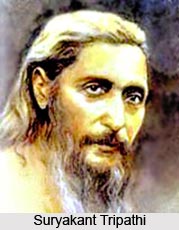 The primary features of the literary activities from Indian contemporary literature under British influence from this phase were:
The primary features of the literary activities from Indian contemporary literature under British influence from this phase were:
•The growth of political consciousness and nationalism and its relation with the literature of this period.
•Reinterpretation of India`s past heritage and creation of new heroes out of Indian history and legends.
•Relation between poetry of this period and the Romantic poets of England.
•Experimentations on the form of the novel and the short story.
•Indian drama and Indian stage: Western influence and the indigenous traditions of performing arts.
•Introduction of fresh themes exploring various dimensions of man-woman relationship.
•Contemporary socio-religious movements and their impact on literature.
•Non-fictional prose literature: personal essay, biography, autobiography etc.
•Literary criticism.
•Continuous tension between the forces of revivalism and those of modernisation.
In fact, in no other period the influence of a foreign literature and an alien culture was so strong on Indian literature and society, as was the British influence on then contemporary Indian literature; and also in no other period of Indian history, Indians had looked back to their past so fondly and passionately. A passionate attraction for the West and a deep love for India are the two regulating factors of this period.
The novel and short story - both new forms in Indian writing, had dominated contemporary Indian literature under British influence during the 19th century. Writers had made effective use of these genres to lend life to realistic portrayals of individuals and to address contemporary social issues. This had marked a change and move from earlier Indian literature - much of which was preoccupied with ideals and all-encompassing social meticulousness. The new authors had arrived from the English-educated and white-collared class of Indians and were influenced by the progressive ideals of the Bengal Renaissance. They also had participated in the rising movement for political rights and representative government for Indians. Nationalism and the criticism of tyrannical social practices were most favoured topics amongst the writers of the period.
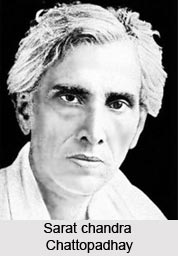 Many of the works of Rabindranath Tagore, Bankim Chandra Chatterjee and other novelists of the late 19th and early 20th centuries, focussed upon the ways in which Indian women of the middle and upper classes were crushed by their lack of economic opportunity, education and freedom of mobility. The heroines of Tagore`s novels Nashtanir (1901; The Broken Nest, 1971) and Ghare-baire as well as the female characters in his short stories, wholly represented the subjugation and domination not only of women, but also of all people. An apprehension and worry for domestic life had dominated the fiction of the popular writers of the following era, such as the Bengali novelists Saratchandra Chattopadhay and Ashapurna Devi, who can be time and again asserted as the shining ones in British influenced writers to contemporary Indian literature.
Many of the works of Rabindranath Tagore, Bankim Chandra Chatterjee and other novelists of the late 19th and early 20th centuries, focussed upon the ways in which Indian women of the middle and upper classes were crushed by their lack of economic opportunity, education and freedom of mobility. The heroines of Tagore`s novels Nashtanir (1901; The Broken Nest, 1971) and Ghare-baire as well as the female characters in his short stories, wholly represented the subjugation and domination not only of women, but also of all people. An apprehension and worry for domestic life had dominated the fiction of the popular writers of the following era, such as the Bengali novelists Saratchandra Chattopadhay and Ashapurna Devi, who can be time and again asserted as the shining ones in British influenced writers to contemporary Indian literature.
Towards the end of the 19th century, women from the Indian middle class had begun writing in an overwhelming manner. Many of them had penned works on women`s issues and social reform. Notable instances include: Tarabai Shinde`s essay in Marathi, Stri Purush Tulana (A Comparison Between Women and Men, 1882); Pandita Ramabai Saraswati`s The High-Caste Hindu Woman (1887), a book in English on the subject of Indian women; and Rokeya Sakhawat Hossain`s writings in Bengali on the constraints of the purdah, a system of seclusion of women.
In the years between World War I (1914-1918) and World War II (1939-1945), three decisive movements had influenced and stimulated Indian contemporary literature under tremendous British influence and its after-effects. The first was the Non-violent Movement towards achieving freedom for India, led by Mahatma Gandhi. The others were the international movements of Marxism and Socialism, which had preached better living and working conditions for the proletariats. Raja Rao had penned Kanthapura (1938), an English novel concerning the participation of Indian villagers in the Gandhian freedom movement. Mulk Raj Anand`s English novels Untouchable (1935) and Coolie (1936) had dealt with the iniquities of the caste system and tyrannical labour practices.
India had achieved its long-cherished Independence from British clutches in 1947, a year that had marked a watershed in the course of contemporary Indian literature under British influence. Independence had forced authors to suddenly shift their focus and struggle with the ideals and realities of being part of a `new nation`. On one hand, there was the overriding euphoria at the new freedom and, on the other hand, as part of Independence, the Indian subcontinent was divided into two separate nations, India and Pakistan - India dominated by Hindus and Pakistan by Muslims. During the decades leading up to Independence, Hindus and Muslims had become increasingly divided and hostile within India itself. The Partition and separation of the newly independent country into two nations was accompanied and followed by severe violence and bloodshed. Especially hard hit were the new border areas - the divided territories of Punjab in the northwest and Bengal in the northeast and the disputed area of Kashmir in the India-Pakistan border.
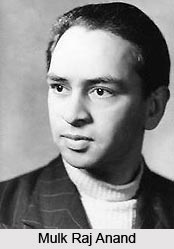 Partition of India had induced millions of people to be exterminated from their home territories or to suffer tearful forever separation within their families. Much Indian and Pakistani fiction after 1947, thus, explored, in one way or another, the consequences of partition on Indian culture. It could never be denied that the basic and overriding English sway was all behind the backing into such a decision. As such, British influence on Indian contemporary literature could still be declined. Another ongoing concern was the rapid rate of change that India, Pakistan and Bangladesh were experiencing in an era of increased globalisation and of the migration of people from the Indian subcontinent to other parts of the world, especially Western countries. A significant development in Indian literature during the mid- and late 20th century, was the rise of female writers and feminist writing - again a major insignia of British influence on Indian literature in them contemporary times.
Partition of India had induced millions of people to be exterminated from their home territories or to suffer tearful forever separation within their families. Much Indian and Pakistani fiction after 1947, thus, explored, in one way or another, the consequences of partition on Indian culture. It could never be denied that the basic and overriding English sway was all behind the backing into such a decision. As such, British influence on Indian contemporary literature could still be declined. Another ongoing concern was the rapid rate of change that India, Pakistan and Bangladesh were experiencing in an era of increased globalisation and of the migration of people from the Indian subcontinent to other parts of the world, especially Western countries. A significant development in Indian literature during the mid- and late 20th century, was the rise of female writers and feminist writing - again a major insignia of British influence on Indian literature in them contemporary times.
While many Indian writers continued to pen in Indian languages, English was also an important tongue for Indians and those of Indian origin. Within India, readers had more and more access to literature in the languages of regions other than their own. This access was largely due to the solemn endeavours of the Indian National Academy of Letters to promote the translation of contemporary works from their original language into other Indian languages and into English. In literary fiction, things started gaining form with writers like Nirad C. Chaudhuri, Mulkraj Anand, R. K. Narayan getting published. These writers possessed what could be referred to as a distinct `colonial` link in their writings, observable through evident/hidden references to the British Empire and culture.
The vernacular languages, on the other hand, have also demonstrated remarkable growth and resoluteness. With the establishment of state institutions favouring the smooth lubrication and flow of all regional Indian literatures and an ever increasing confidence indicator amongst native speakers of these languages, the upward lilt was something which could not be avoided.



















